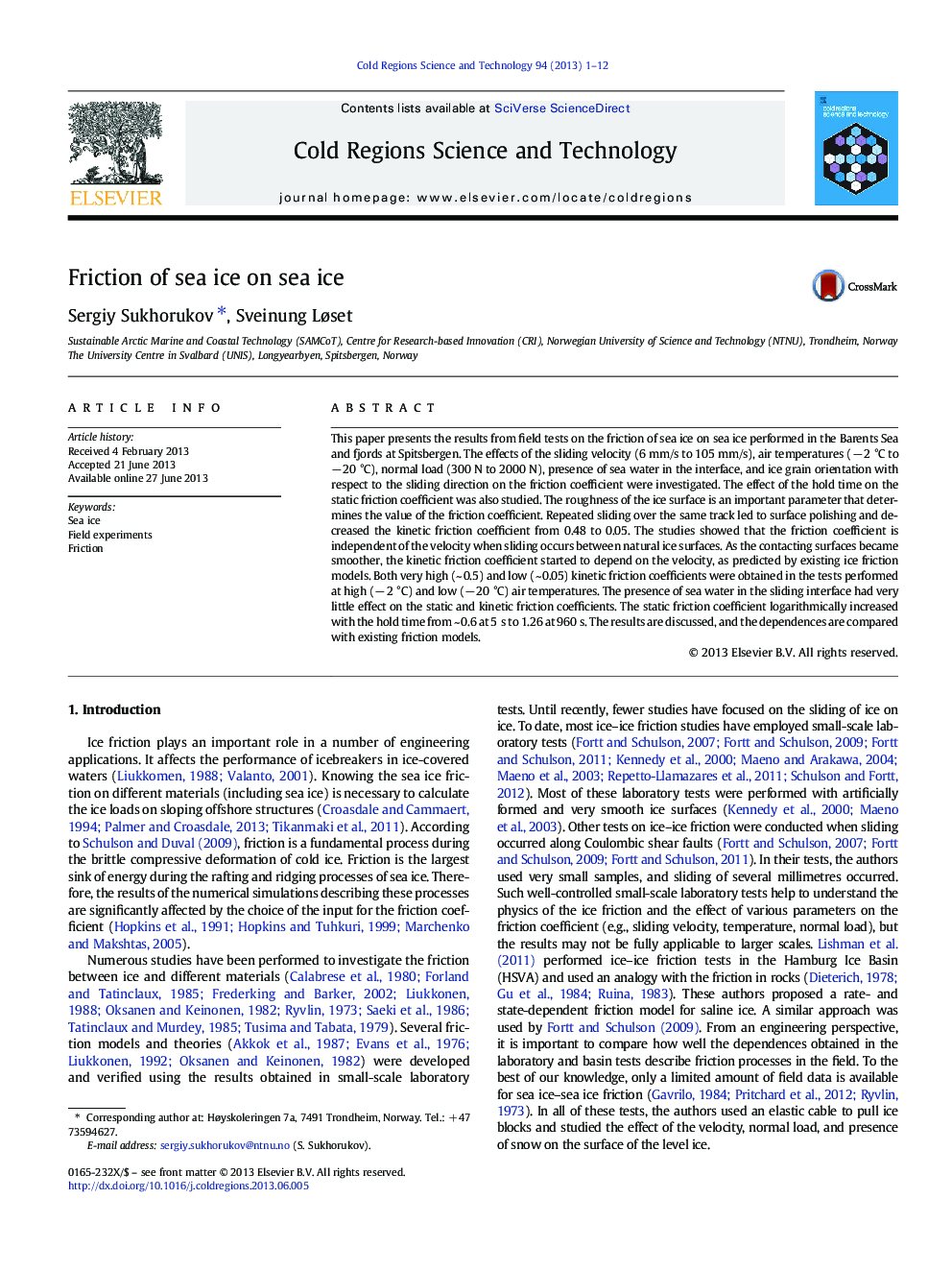| Article ID | Journal | Published Year | Pages | File Type |
|---|---|---|---|---|
| 6426969 | Cold Regions Science and Technology | 2013 | 12 Pages |
Abstract
This paper presents the results from field tests on the friction of sea ice on sea ice performed in the Barents Sea and fjords at Spitsbergen. The effects of the sliding velocity (6 mm/s to 105 mm/s), air temperatures (â 2 °C to â 20 °C), normal load (300 N to 2000 N), presence of sea water in the interface, and ice grain orientation with respect to the sliding direction on the friction coefficient were investigated. The effect of the hold time on the static friction coefficient was also studied. The roughness of the ice surface is an important parameter that determines the value of the friction coefficient. Repeated sliding over the same track led to surface polishing and decreased the kinetic friction coefficient from 0.48 to 0.05. The studies showed that the friction coefficient is independent of the velocity when sliding occurs between natural ice surfaces. As the contacting surfaces became smoother, the kinetic friction coefficient started to depend on the velocity, as predicted by existing ice friction models. Both very high (~ 0.5) and low (~ 0.05) kinetic friction coefficients were obtained in the tests performed at high (â 2 °C) and low (â 20 °C) air temperatures. The presence of sea water in the sliding interface had very little effect on the static and kinetic friction coefficients. The static friction coefficient logarithmically increased with the hold time from ~ 0.6 at 5 s to 1.26 at 960 s. The results are discussed, and the dependences are compared with existing friction models.
Keywords
Related Topics
Physical Sciences and Engineering
Earth and Planetary Sciences
Earth and Planetary Sciences (General)
Authors
Sergiy Sukhorukov, Sveinung Løset,
